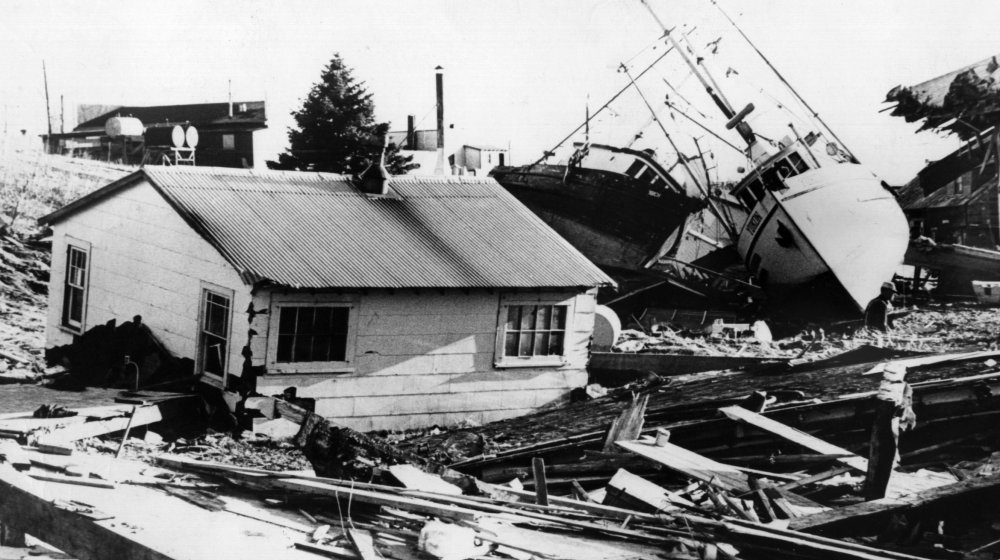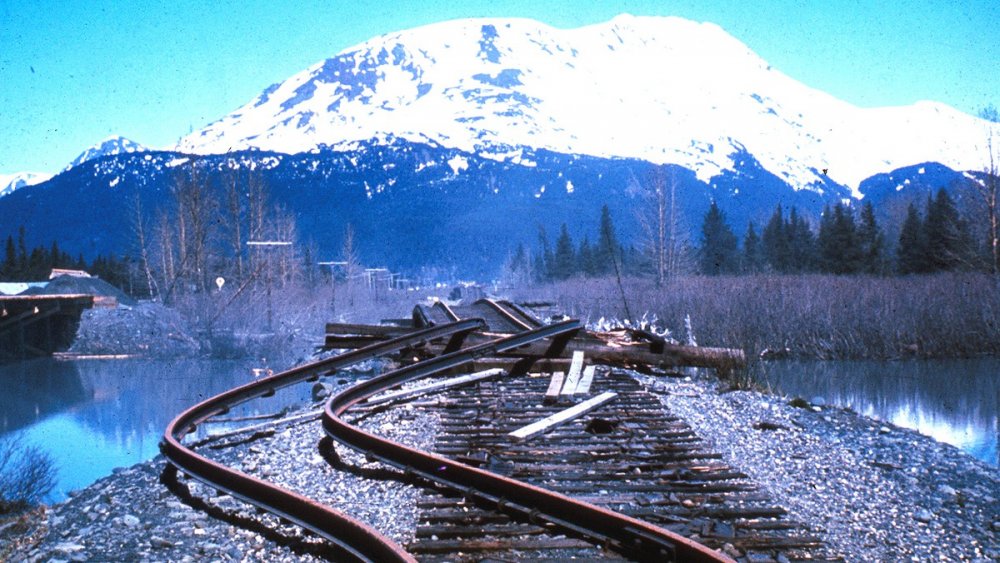The Truth About The Largest Earthquake In U.S. History
Earthquakes are considered one of nature's biggest surprises, since they seem to happen without warning, anywhere and anytime. Technology is getting better and better at detecting these tremors before they happen. Scientists at the United States Geological Survey agency have developed earthquake early warning systems (EEW) that monitor networks of ground motion sensors in certain areas that can issue public alerts seconds before shaking begins. There's even advanced machine-learning technology that can predict major tremors by analyzing acoustic signals to find failing fault lines within the Earth's core.
According to the National Earthquake Information Center, there are about 20,000 earthquakes documented in the U.S. per year, and 16 of those are considered "major" earthquakes. Some of the more famously destructive earthquakes include the 1906 San Francisco earthquake and the 1971 San Fernando quake. But one particular U.S. earthquake stands out from the rest: The Great Alaskan earthquake of 1964.
On the evening of March 27, 1964, Alaska got a rude awakening thanks to an earthquake that hit Prince Williams Sound, a body of water on the Gulf of Alaska's borders. The earthquake was calculated at magnitude 9.2 and lasted a little over four minutes, making it the most massive earthquake ever recorded in the U.S. to this day.
The Great Alaskan Earthquake caused hundreds of millions of dollars in damage
The earthquake caused extreme upheavals to south-central Alaska, resulting in $300-400 million in damage and 131 deaths, according to the Alaska Earthquake Center. It also triggered a devastating tsunami, which was also the second-largest tsunami ever recorded. The Alaska Earthquake Center reports that the tsunami's waves reached about 230 feet tall. Aside from Alaska, the quake was felt in every state except for three on the East Coast, according to History.com. One Alaskan resident who recounted the historic natural disaster told Anchorage Daily News, "The earth flipped its wig."
Like many natural disasters, there seemed to be neither rhyme nor reason for the Alaskan earthquake of 1964. One positive note is that geologists studying the quake discovered a primary cause: The Earth's core moved that day. History.com reports that the Pacific Plate literally slipped under the North American Plate. The town of Valdez, Alaska, which sat on this particular plate intersection, was leveled. The rebuilt town was located four miles east as a result of the earthquake.

